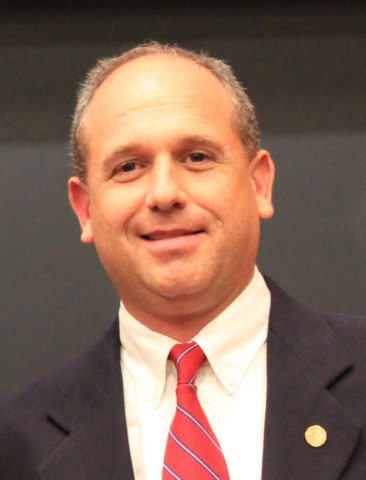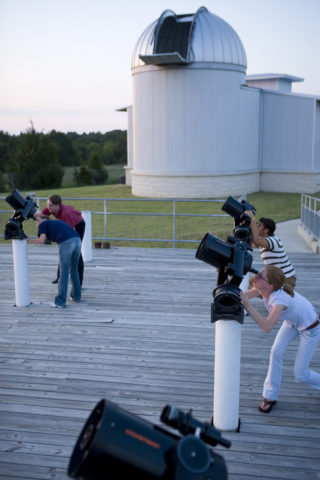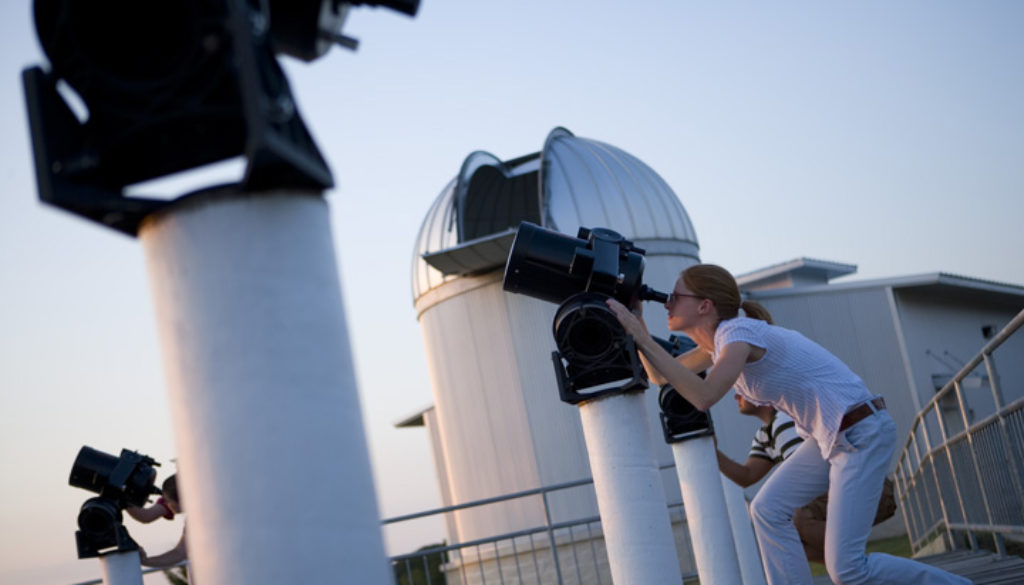Texas A&M Observatory Ranked Third-Best in Nation
In addition to a world-class astronomy program, Texas A&M University is home to one of the top three college astronomy observatories in the nation, according to the website College Rank.
The Texas A&M Physics and Astronomy Teaching Observatory is ranked No. 3 in a recent survey of the 25 Best College Astronomy Observatories by CollegeRank.net, a Michigan-based web entity seeking to “cut through the noise” of online college-related information by highlighting — and, wherever possible, ranking — every aspect of what different colleges have to offer in hopes of giving prospective students a more holistic understanding of their many higher-education options.
“We beat out many established names in astronomy programs at other universities,” said Nicholas B. Suntzeff, university distinguished professor of physics and astronomy and head of the Texas A&M astronomy program. “Of course, it is Don Carona who should be named No. 3, considering the observatory only exists in its present form because of his dedicated work.”


Since 2005 Carona has served as the first and only manager of the Texas A&M Observatory, a key part of the university’s internationally known astronomy program. Under his leadership, the observatory has become a premier teaching resource. The facility features a 60-seat classroom, a 16-inch telescope housed under an 18-foot hydraulically operated dome, a robotic observatory with a 20-inch telescope that can be controlled remotely via the Internet, and a student observing deck that supports 16 telescope piers for 8-inch student telescopes used in various astronomy classes as well as public outreach events.
“As I understand the premise, the observatories were selected based first on their devotion to astronomy teaching, outreach and/or research and second on their architectural uniqueness compared to other facilities,” Carona said. “A number of the college observatories have fashioned their programs after ours. Likewise, several observatories in the public and private sectors have used modifications of our plans to build their facilities. Therefore, I assume that someone involved in this process may have had some existing and historical knowledge of our program.”
In addition to teaching and service, observatory resources figure big in several international research collaborations, including the Dark Energy Survey and DECam, the Giant Magellan Telescope, the Hobby-Eberly Telescope Dark Energy Experiment (HETDEX) and the Large Synoptic Survey Telescope (LSST). Carona also currently is working with Texas A&M astronomer Lifan Wang and his graduate student, Fedja Kadribasic, on a polarimeter project using small optics.
“Not only is the facility used as a student observatory for undergraduate classes, but graduate students also use the telescope as an optical platform to debug instrumentation with Don’s help,” Suntzeff said. “Star parties are held there, which attract significant public interest. Don also has reached out to the amateur astronomy clubs who hold meetings there — vital networking and support, given that the amateur astronomy community is quite large across the Brazos Valley and well connected with area schools and the general public.”
Carona was instrumental in getting the facility upgraded in 2002 from the one he initially voluntarily ran on a contract-employee basis in his spare time after hours and on weekends while moonlighting from his then-full-time job as a programmer with CIS. He designed and monitored the construction, which was completed in 2003, then signed on full time shortly thereafter.
“The excellence of the observatory is due to one man, Don Carona, who by his dedication and skill has built what is now a nationally recognized student observatory,” Suntzeff said. “And he has done this on a very tight budget, getting contractors to build at-cost, engineers to donate time to fix astronomical equipment, architects to donate plans, and much more.
“As a veteran IT person here at Texas A&M in his previous job, he has also set up a Mac-based astronomical computer lab at the observatory. He is one of the many Aggie staff we have who goes way beyond an 8-to-5 job and adds passion to his work that is contagious among fellow staff, professors and students.”
Beyond his day-to-day management responsibilities, Carona says he is attempting to secure funding for an expansion to the observatory’s current facilities that will include a new student observing deck and a home for an historic Boller & Chivens mount gifted by Kitt Peak National Observatory, the National Optical Astronomy Observatory and the National Science Foundation.
To see the complete survey, go to http://www.collegerank.net/amazing-college-observatories/.
For additional information about the observatory, visit http://observatory.tamu.edu/ or http://astronomy.tamu.edu.
-aTm-
Contact: Shana K. Hutchins, (979) 862-1237 or shutchins@science.tamu.edu; Dr. Nicholas B. Suntzeff, (979) 229-9597 or nsuntzeff@tamu.edu; or Don W. Carona, (979) 845-0536 or don@tamu.edu
The post Texas A&M Observatory Ranked Third-Best in Nation appeared first on Texas A&M College of Science
